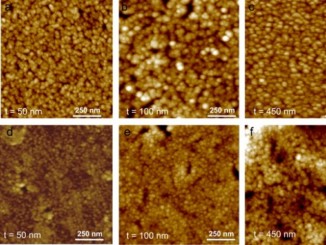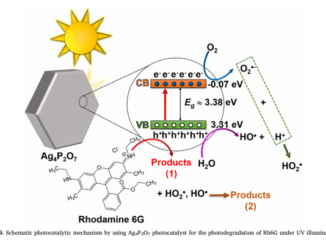
Theoretical Study of the Stoichiometric and Reduced Ce-Doped TiO2 Anatase (001) Surfaces
Abstract: The effects of Ce doping (2.6%) on the oxygen vacancy (V-O) formation energy (Et) and the electronic structure of the anatase TiO2(001) surface were studied by ineans of periodic density functional calculations within the PBE and PBE + U approaches. Several situations were considered for V-o formation, differing in terms of the position in relation to the dopant site (at the surface and subsurface atomic layers). The vacancy energy of formation is almost always lower for the surface than for the bulk, but the difference is still larger with Ce dopant in the subsurface layers. Nevertheless, the Ce-for-Ti substitution is more stable at the outermost layers, indicating thermodynamically favorable dopant migration toward, the oxide surface. The PEE + U approach provides a physically meaningful description of localized d and f electrons in Ti3+ and Ce3+ species, respectively: Moreover, fully localized spin (simple and split) or partially localized spin solutions are found within similar to 0.5 eV range. Not unexpectedly, standard. PBE fails to describe electron-localized solutions, but interestingly, it predicts the same geometries and order of stability of different vacancy positions. The present work provides compelling evidence that oxygen vacancy formation is remarkably facilitated by Ce dopant in TiO2 anatase {001} facets, but only when Ce is in subsurface positions.
Author(s): Albuquerque, AR; Bruix, A; Sambrano, JR; Illas, F
JOURNAL OF PHYSICAL CHEMISTRY C
Volume: 119 Pages: 4805-4816 Published: MAR 5 2015
PDF: Theoretical Study of the Stoichiometric and Reduced Ce-Doped TiO2 Anatase (001) Surfaces
DOI: 10.1021/jp5105483




